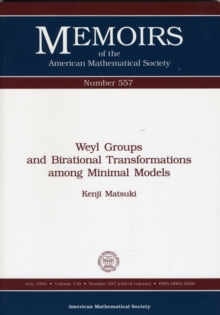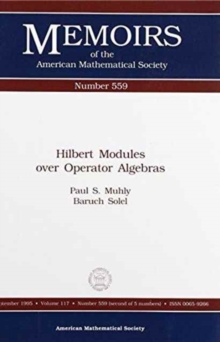
The Triangle-Free Process and the Ramsey Number $R(3,k)$ Paperback / softback
by Gonzalo Fiz Pontiveros, Simon Griffiths, Robert Morris
Part of the Memoirs of the American Mathematical Society series
Paperback / softback
Description
The areas of Ramsey theory and random graphs have been closely linked ever since Erdos's famous proof in 1947 that the ``diagonal'' Ramsey numbers $R(k)$ grow exponentially in $k$.
In the early 1990s, the triangle-free process was introduced as a model which might potentially provide good lower bounds for the ``off-diagonal'' Ramsey numbers $R(3,k)$.
In this model, edges of $K_n$ are introduced one-by-one at random and added to the graph if they do not create a triangle; the resulting final (random) graph is denoted $G_n,\triangle $.
In 2009, Bohman succeeded in following this process for a positive fraction of its duration, and thus obtained a second proof of Kim's celebrated result that $R(3,k) = \Theta \big ( k^2 / \log k \big )$.
In this paper the authors improve the results of both Bohman and Kim and follow the triangle-free process all the way to its asymptotic end.
Information
-
Available to Order - This title is available to order, with delivery expected within 2 weeks
- Format:Paperback / softback
- Pages:125 pages
- Publisher:American Mathematical Society
- Publication Date:30/04/2020
- Category:
- ISBN:9781470440718
Other Formats
- PDF from £76.50
Information
-
Available to Order - This title is available to order, with delivery expected within 2 weeks
- Format:Paperback / softback
- Pages:125 pages
- Publisher:American Mathematical Society
- Publication Date:30/04/2020
- Category:
- ISBN:9781470440718









